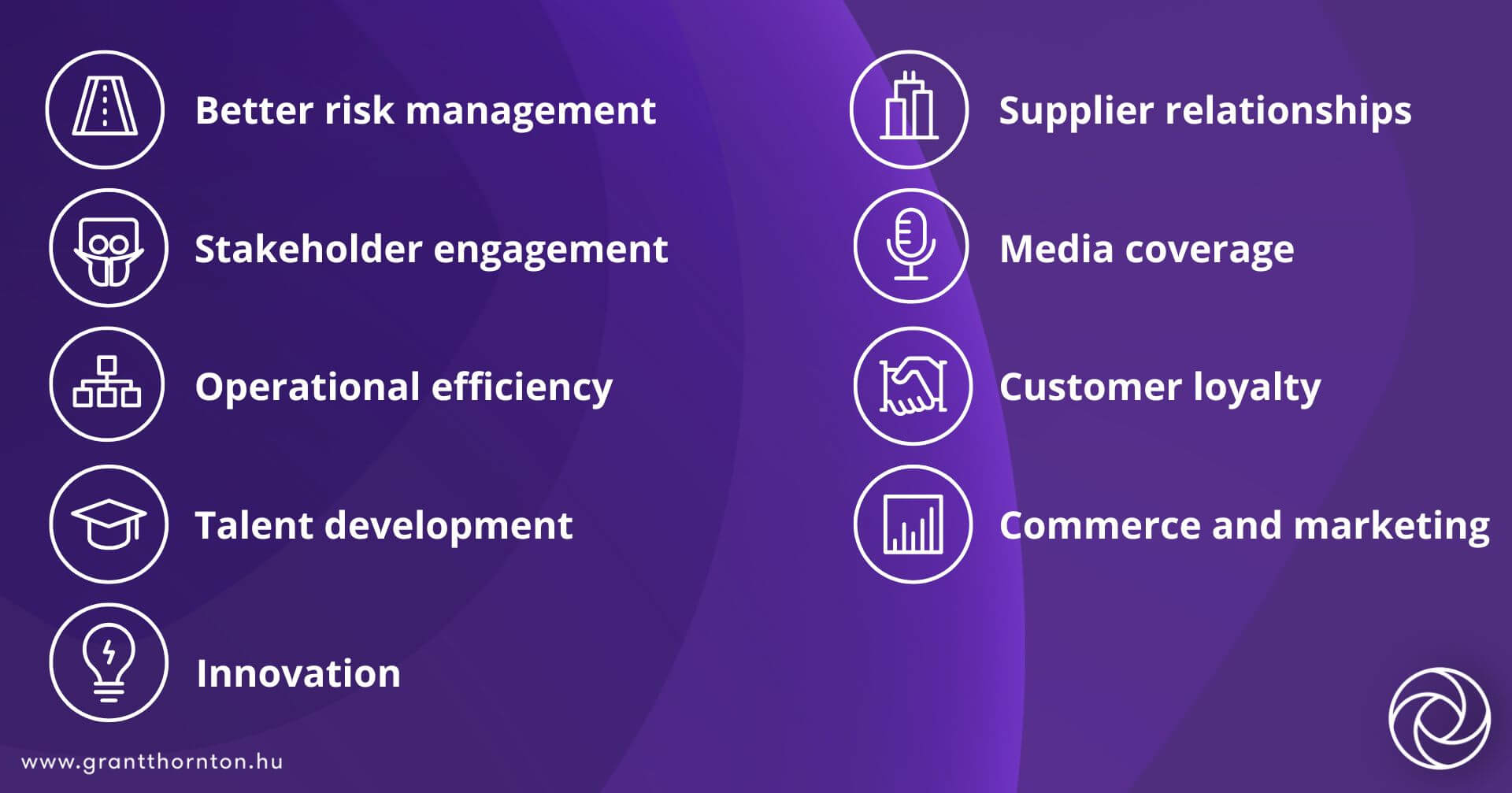Justifying sustainability investments is a challenge for many ESG professionals. In this short article, we aim to offer a simple, 5-step method to address this problem.
Investments in sustainability initiatives create business value that is often not calculated or tracked, which makes it difficult to secure internal support—especially in periods of limited financial resources. For this reason, it is essential from the beginning to assess the internal business justification of the investments needed to implement or maintain sustainable business initiatives. Embedding sustainability-related investments into capital allocation and decision-making processes can increase both the volume and the speed of these investments.
The method presented below builds on the assumption that embedding sustainability into business strategy leads to improvements through a number of intermediary factors:
These developments
- increase revenue,
- improve profitability, and
- raise corporate valuation,
which ultimately result in higher business value and greater positive social impact.
Unfortunately, this value is often not calculated due to missing data or because the finance team is not involved in the accounting of sustainability value, and the monetary expression of avoided risks is difficult.
The 5-step approach
First, the specific sustainability objective must be defined for which investment justification is required. In our example, we use greenhouse gas emission reduction as one of the most common objectives.
Second, identify the measures and practices linked to the selected objective to provide a basis for defining the benefits. Continuing with the previous example, list the measures and practices introduced to reduce greenhouse gas emissions, such as switching to renewable energy or implementing energy-efficiency measures. A deeper analysis is often needed to understand the full context. For example, how is the transition to renewable energy planned? Through own generation or a virtual power purchase agreement?
Third, identify the benefits arising from the measures and practices. Use the list of intermediary factors described in the introduction. For example: does switching to renewable energy improve customer loyalty, support the retention of employees increasingly committed to sustainability, or help avoid potential fines? This analysis may require a cross-functional team to ensure all benefits are identified.
Fourth, assess each benefit, quantify them where possible, and set a timeline for their realisation. Transitioning to renewable energy through green electricity purchases is, for example, much faster than installing a geothermal well, with different costs and pay-back periods. At this stage, the involvement of the finance function is valuable—and generally unavoidable—because some of the value recognised through intermediary factors is typically also recognised in traditional accounting.
Finally, calculate the net present value (NPV), i.e., the sum of future cash flows discounted to present value over the investment’s lifetime, applying the relevant time horizon and discount rate for the company and the selected measures. A geothermal well investment, for example, has a much longer time horizon than a VPPA, and your finance department can advise on the appropriate discount rate.
Why does this matter?
This approach can also be used to analyse the financial impact of potential future sustainability investments. It can, for instance, help assess the benefits of acting earlier than required on sustainability regulation, or the financial risks of inaction in areas such as waste management or the introduction of recycled packaging materials.
The true “plus” lies in the use of intermediary values—the assessment of a broader range of benefits—which can reveal financial advantages not captured by traditional financial analysis, thereby enabling a wider range of sustainability investments to gain leadership support.
***
Contact our ESG specialists to turn your sustainability investments into measurable business value.
Related Services
Sustainability, ESG consultancy
We support our clients in sustainability transformation and compliance with reporting/regulatory obligations.
ESG mentoring
Weekly/biweekly personal advising and mentoring with a practical focus, tailored to the schedules of managers and internal sustainability experts.
Elaborating the ESG strategy
ESG strategies and action plans are benefits, not liabilities.
The ESG agenda
To shape your agenda, you will need to identify the priorities that are most relevant to your organisation.







